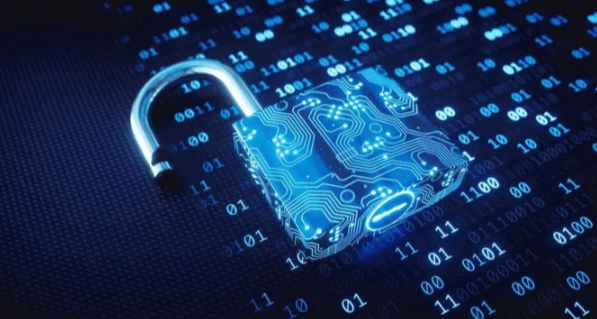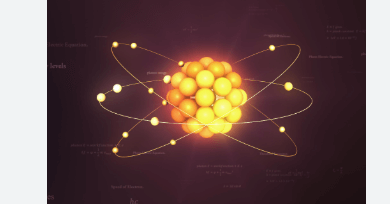Quantum Cryptography: The Next Frontier in Cybersecurity

The world of cybersecurity is evolving rapidly as new technologies emerge and old methods become less effective against increasingly sophisticated threats. One of the most promising developments in this field is quantum cryptography, which harnesses the principles of quantum mechanics to secure communications in ways that were previously unimaginable. As traditional encryption techniques face growing vulnerabilities, quantum cryptography represents the next frontier in safeguarding data and privacy.
The Basics of Cryptography and Why It Needs Innovation
Cryptography, at its core, is the practice of securing information through codes and ciphers so that only the intended recipient can read it. For centuries, encryption has relied on mathematical algorithms to create secure communications. Techniques like the RSA algorithm or AES encryption have provided the backbone for most modern encryption methods.
However, the landscape of cybersecurity is changing. With the advent of quantum computers, traditional encryption methods could be rendered obsolete. Classical encryption methods rely on the complexity of factoring large numbers or solving discrete logarithms, tasks that are computationally intensive for current classical computers. Quantum computers, however, can potentially solve these problems exponentially faster, making it possible to break these encryption schemes in a fraction of the time. This poses an existential threat to modern cryptography, and quantum cryptography is emerging as a solution to this issue.
What Is Quantum Cryptography?
Quantum cryptography is a branch of cryptography that uses quantum mechanics principles to encrypt and transmit data securely. The most well-known application of quantum cryptography is Quantum Key Distribution (QKD). QKD allows two parties to share encryption keys in a way that guarantees security based on the laws of quantum physics, rather than on the computational difficulty of breaking the key.
Quantum cryptography operates using particles of light, known as photons, which are used to transmit data. Thanks to the fundamental principles of quantum mechanics, such as quantum superposition and quantum entanglement, any attempt to eavesdrop on the communication disturbs the system and is detectable by the communicating parties.
How Quantum Key Distribution Works
To understand QKD, it’s helpful to break down its basic process:
- Photon Transmission: Two parties, commonly referred to as Alice and Bob, want to communicate securely. Alice sends photons to Bob, with each photon representing part of a secret encryption key. These photons can exist in multiple quantum states (representing bits of information), and their state is determined by quantum properties like polarization.
- Random Measurement: Bob measures the photons using random polarization filters. Because quantum states can’t be observed without altering them, Bob’s measurements might not always match what Alice sent. However, this is part of the protocol, and any discrepancies can later be corrected.
- Key Agreement: Alice and Bob publicly compare parts of their results to identify which measurements were successful without revealing the actual values of the bits themselves. The measurements that match are used to generate the encryption key.
- Eavesdropper Detection: If an eavesdropper (commonly called Eve) tries to intercept the photons, the act of measuring them will disturb their quantum states, alerting Alice and Bob to the intrusion. This guarantees the security of the key exchange—any attempt at eavesdropping can be immediately identified, and the key can be discarded if tampering is detected.
This method of key distribution is theoretically secure against any computational attack, including those that could be performed by future quantum computers.
Advantages of Quantum Cryptography
Quantum cryptography offers a range of benefits over traditional encryption methods, particularly in an era where cyber threats are becoming more advanced. The most notable advantages include:
1. Unbreakable Encryption: The laws of quantum mechanics, specifically the Heisenberg Uncertainty Principle, guarantee that any attempt to measure or observe a quantum system will alter that system. In the context of quantum cryptography, this means that any eavesdropping on a communication is detectable, making it virtually impossible for a third party to intercept communications undetected.
2. Future-Proof Security: Unlike classical cryptographic algorithms that could eventually be broken by quantum computers, QKD provides security that is theoretically immune to even quantum computational attacks. This makes it a long-term solution to protecting sensitive information in a post-quantum world.
3. No Reliance on Computational Difficulty: Traditional cryptography relies on the difficulty of solving certain mathematical problems, such as factoring large numbers, which are computationally difficult for classical computers but trivial for quantum computers. Quantum cryptography does not depend on these assumptions, providing an entirely new level of security.
4. Detection of Eavesdropping: One of the most significant advantages of quantum cryptography is its ability to detect eavesdropping in real-time. If a hacker tries to intercept the quantum key exchange, they will inevitably leave a trace, allowing the parties to take preventive measures immediately.
5. Scalability and Integration with Classical Systems: QKD systems can be integrated with existing telecommunication infrastructures. Optical fiber networks, for instance, can support quantum key distribution with only minor modifications, allowing for a smoother transition to quantum-secure communication.
Challenges Facing Quantum Cryptography
While quantum cryptography holds tremendous promise, several challenges must be overcome before it can become widespread. These include:
1. Distance Limitations: One of the main challenges of quantum cryptography is the range over which quantum keys can be transmitted. Currently, QKD is effective over relatively short distances—typically around 100 to 200 kilometers in fiber optic cables. Extending this range without losing data integrity requires quantum repeaters, which are still in development.
2. Infrastructure and Cost: Implementing quantum cryptography requires significant investment in specialized hardware, including quantum random number generators, photon detectors, and dedicated communication channels. For widespread adoption, costs need to be reduced, and the technology needs to be integrated into existing infrastructure more easily.
3. Technological Maturity: Quantum cryptography is still in its infancy compared to classical cryptography. While there have been successful demonstrations of QKD, especially in controlled environments, the technology has yet to reach the maturity required for mass-market adoption.
4. Susceptibility to Side-Channel Attacks: Although quantum cryptography is theoretically secure, practical implementations are not immune to all forms of attack. Side-channel attacks, which exploit weaknesses in the physical systems rather than the encryption algorithms themselves, pose a potential threat to the security of quantum cryptographic systems.
Use Cases and Applications of Quantum Cryptography
As the technology matures, several industries are beginning to explore the potential applications of quantum cryptography. Some of the most promising sectors include:
1. Government and Military Communications: Protecting state secrets and sensitive military communications from cyberattacks is a top priority for many governments. Quantum cryptography can provide a new level of security for diplomatic communications, military operations, and national security data.
2. Financial Institutions: Banks and financial institutions handle vast amounts of sensitive data, making them prime targets for cyberattacks. Quantum cryptography can safeguard online transactions, secure communication between financial entities, and protect against identity theft and fraud.
3. Healthcare Data Protection: The healthcare sector stores highly sensitive personal and medical data that must be protected from breaches. Quantum cryptography can ensure the confidentiality of patient information and prevent unauthorized access to medical records.
4. Cloud Computing and Data Centers: As more companies move their operations to the cloud, data security becomes a major concern. Quantum cryptography could play a vital role in securing data in transit between data centers and ensuring the privacy of cloud-based communications.
5. Telecommunications and Internet Security: With the increasing number of cyberattacks targeting telecommunications infrastructure, quantum cryptography offers a way to secure internet traffic and protect against the interception of communications.
The Future of Cybersecurity in a Quantum World
Quantum cryptography is poised to revolutionize the field of cybersecurity, but it is not a silver bullet. While QKD can protect the transmission of encryption keys, it does not solve all cybersecurity challenges. Other areas, such as securing endpoints, detecting intrusions, and protecting data at rest, will still require innovative solutions, both quantum and classical.
Nevertheless, as quantum computing advances, the need for quantum-resistant encryption will become more urgent. Cryptographers are already working on post-quantum cryptography—algorithms designed to be secure against quantum attacks. In combination with quantum cryptography, these new algorithms will form the backbone of future cybersecurity systems.
In conclusion, quantum cryptography represents a groundbreaking shift in the way we think about securing digital communications. By leveraging the unique properties of quantum mechanics, it promises to create encryption methods that are fundamentally secure against even the most advanced technological threats. As we continue to push the boundaries of what is possible in both quantum computing and quantum cryptography, the future of cybersecurity looks both exciting and full of potential.
FAQs:
- What makes quantum cryptography different from classical cryptography? Quantum cryptography uses the principles of quantum mechanics to secure communications, making it immune to certain computational attacks that threaten classical cryptography.
- Can quantum cryptography be hacked? In theory, quantum cryptography is unbreakable due to the laws of quantum physics. However, practical implementations might still be vulnerable to side-channel attacks or physical hardware flaws.
- Is quantum cryptography ready for widespread use? While promising, quantum cryptography is still in its early stages. It has been successfully tested in controlled environments, but scaling it for global use remains a challenge.
- What industries will benefit most from quantum cryptography? Sectors such as government, finance, healthcare, and telecommunications are likely to benefit the most, as they handle highly sensitive information that requires top-tier security.
- How does Quantum Key Distribution (QKD) work? QKD allows two parties to share a secure encryption key through quantum states. Any eavesdropping attempt alters the key and is immediately detectable.
- What are the limitations of quantum cryptography? Distance limitations, high costs, and the need for new infrastructure are some of the barriers preventing the widespread adoption of quantum cryptography.





